Today's Tidbit... Percy Wendell, Nose Guards, and Serbian Restaurant Riots
Caspar Whitney named the first All-American football team in 1889, so while All-Americans are members of an exclusive club each year, a large number have become members over the years that I do not know or have not given attention. One such player was Percy L. Wendell, a Harvard halfback and kicker who was a second-team All-American in 1912 and first-team All-American in 1913 and 1914.
Wendell captained the Harvard eleven in 1912 under Percy Haughton. Considered the ideal captain, the senior class also voted him its president. In his senior year, he earned a patent for a new type of protective nose device. Arthur Cumnock, Harvard's 1890 captain, invented the popular Morrill nose guard in 1890 after Jerry-rigging a similar device for a teammate in 1889. The Morrill noise guard became very popular, leading to many imitators and those seeking to enhance the device. (I previously traced the history of nose guards and face masks.)
The nose guard protected many broken schnozzes and the faces of those hoping to protect their beaks, but wearing them came at a price. The top of the nose guard strapped around the forehead while the bottom stayed in place via a rubber shelf, which the wearer clenched between their front teeth, making breathing difficult.
Wendell's patented nose guard offered two advantages. It had a sizable hole in the front to make breathing through the nose easier, while a leather strap clenched between the back teeth secured the lower part of the nose guard. Supposedly, clenching with the back teeth made breathing easier for some, but nose guards soon lost favor regardless of the design.

After graduation, Wendell attended Harvard Medical School for two years, sometimes volunteering as a coach at Harvard. While taking medical school classes in Munich during the summer of 1914, he found himself in a powder keg when Archduke Ferdinand was assassinated in late June. Wendell returned home later that summer, but not before experiencing a German customer riot at a Serbian restaurant in Munich.
Wendell soon dropped out of medical school and entered private business while joining Battery A of the Massachusetts National Guard. It was part of the 26th Yankee Division, the second U.S. Division sent to France. They arrived in October 1917 and were among the first U.S. troops to enter battle. Wendell returned to the U.S. in the summer of 1918 to serve as an artillery instructor and was here when the war ended.
After the war, Wendell returned to the investment business while also coaching football. He mentored Boston U. in 1920 before leading Williams for four years, going 20-10-1. His Williams teams won three of four from Columbia, including a 1923 win over his former mentor, Percy Haughton.
Wendell led Lehigh for three additional years before retiring from football after the 1927 season. He passed away in 1932 following a bout with pneumonia.
Postscript
A reader sent images of a Wendell nose guard modified to include rubber-biting elements.
Football Archaeology is reader-supported. Click here to buy one of my books or otherwise support the site.



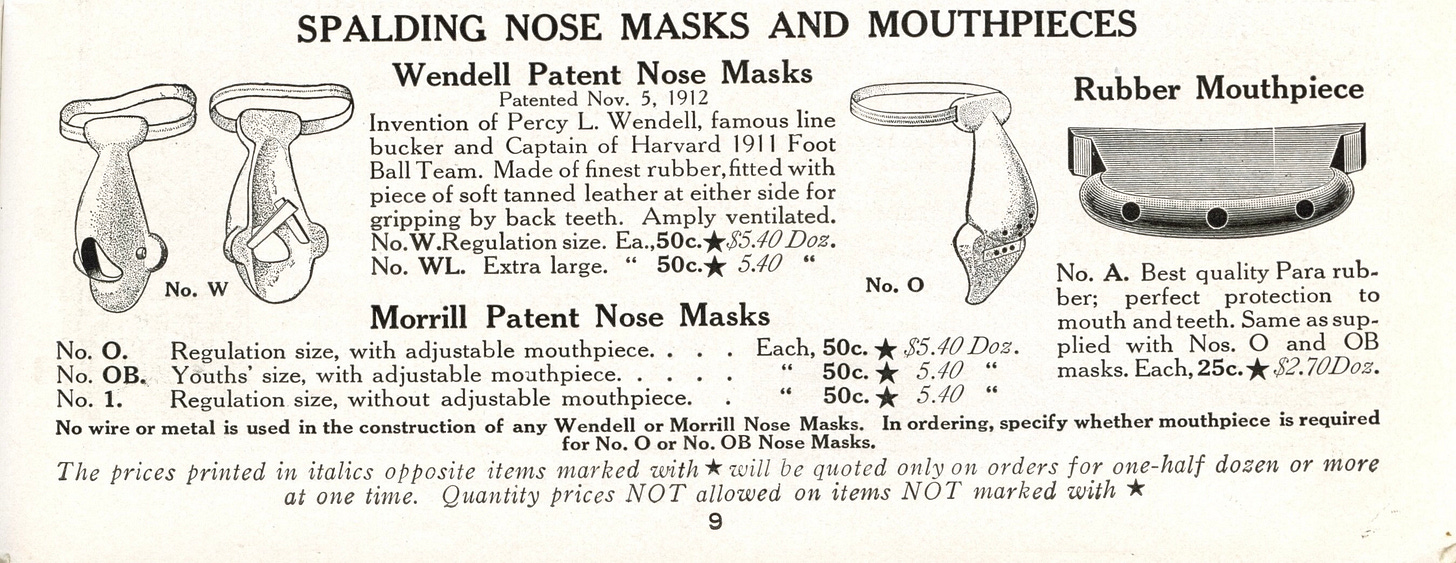
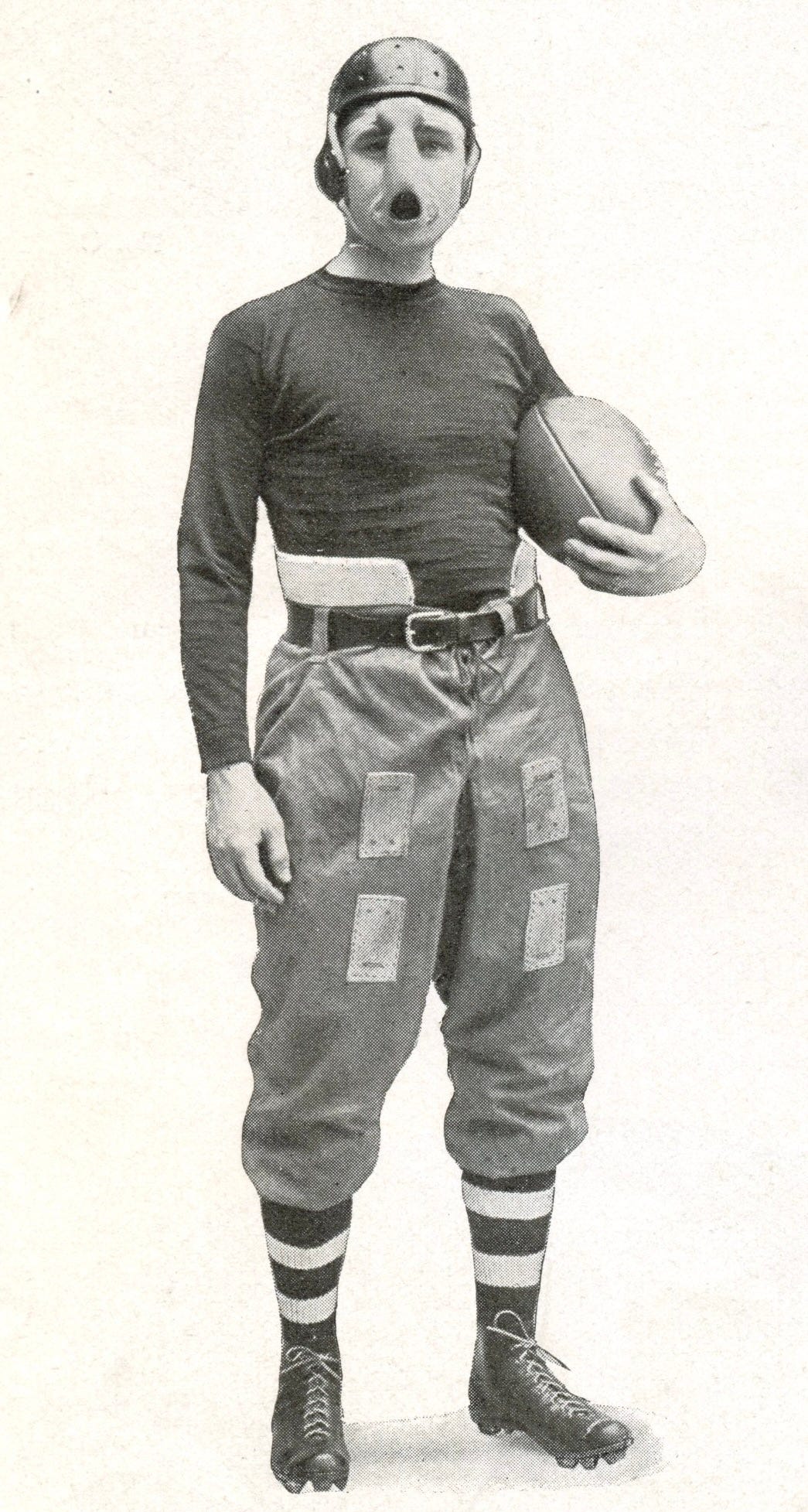
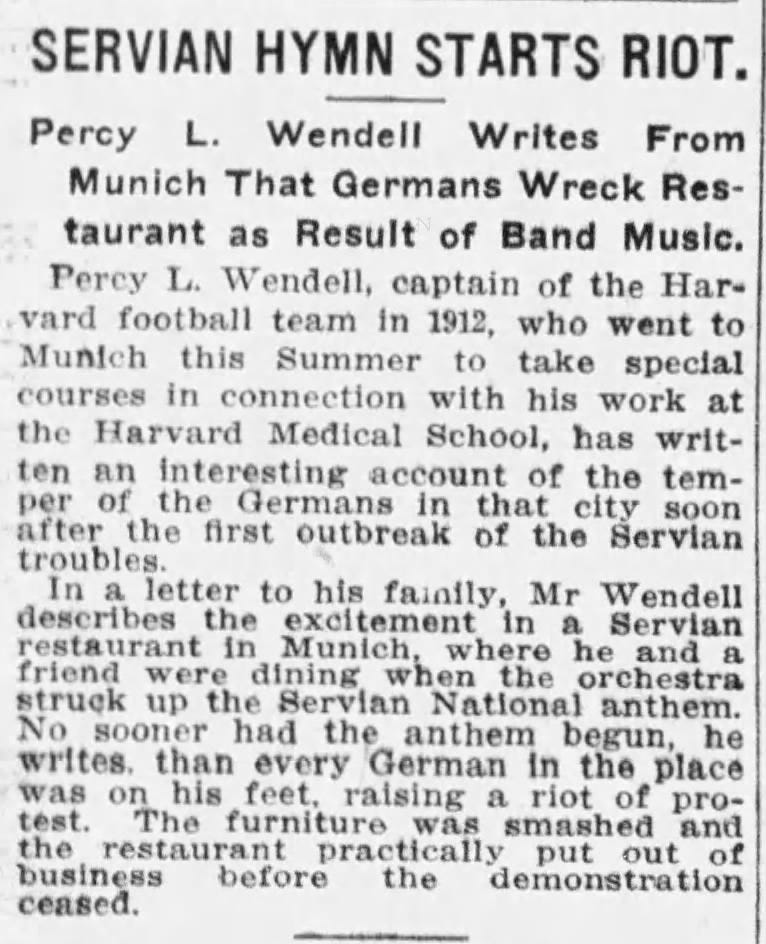
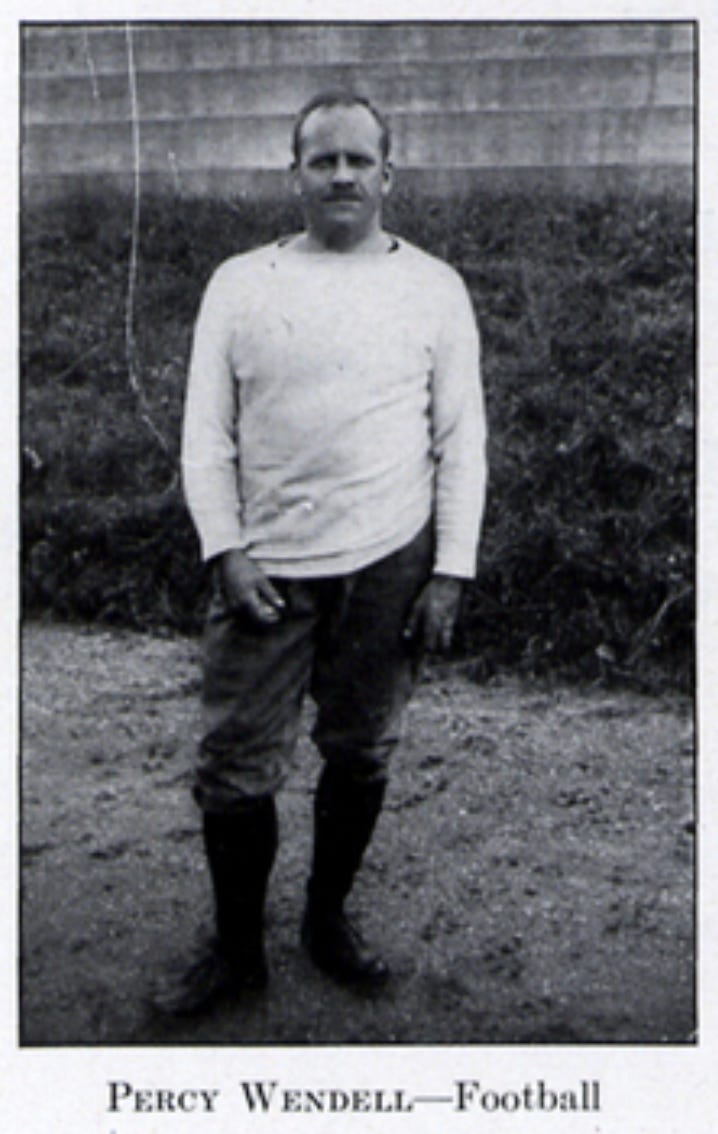
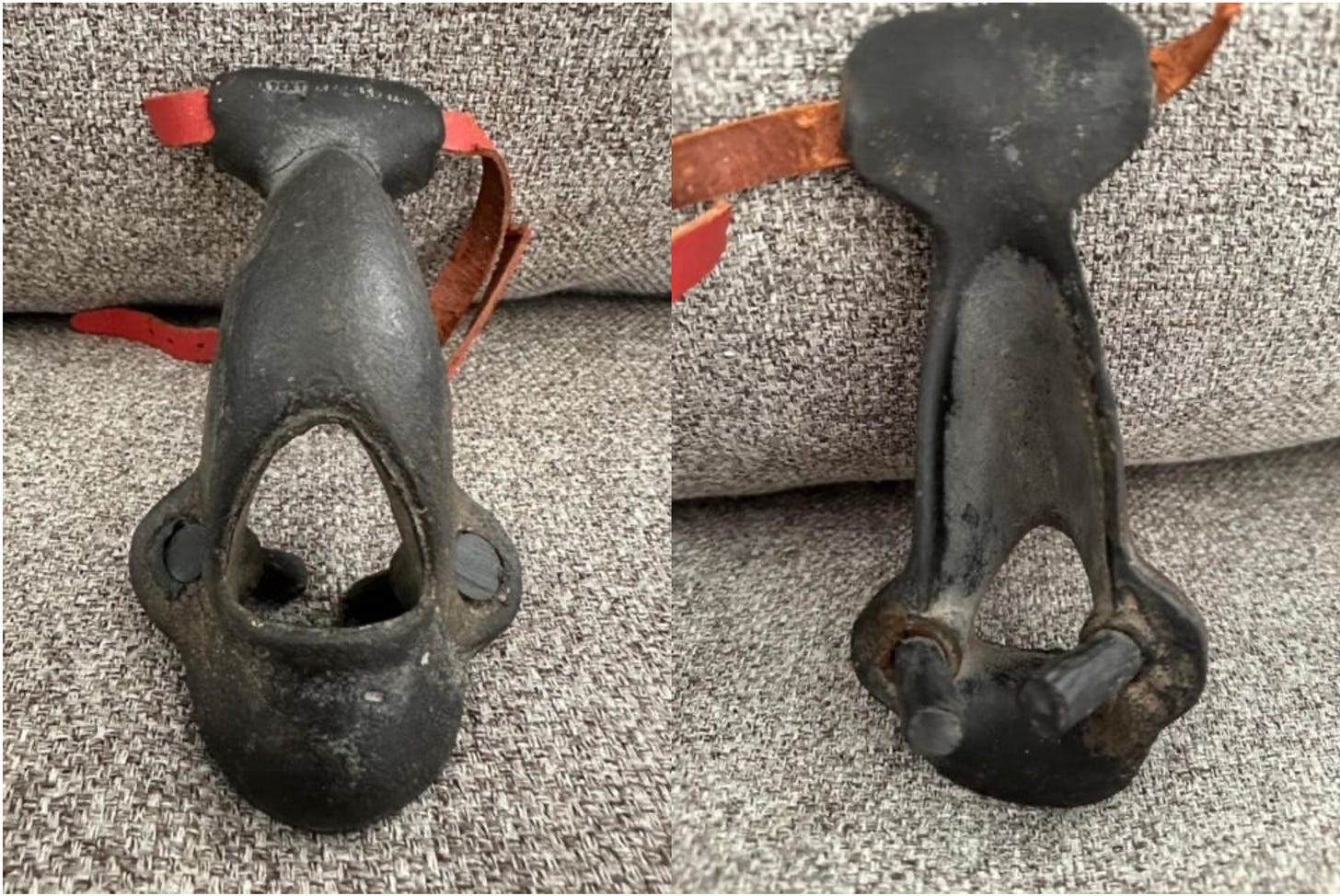
There may be more. In my book "The Coach Who Strangled the Bulldog: How Harvard's Percy Haughton Beat Yale and Reinvented Football," I posit that Wendell may have been a victim of CTE. His head-first running style could have been the cause. (He was known as "The Human Bullet.") But accounts of his final days are consistent with those we read about today's victims. Of course, we'll never really know.